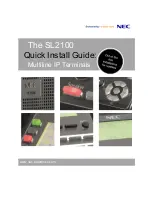
6 - Operation
DynaFlex II| Product Family | Installation and Operation Manual
Page 42 of 78 (D998200554-10)
6.6.3
How to Charge the Battery
Per UL requirements, the device is designed to not recharge its internal battery when the
external temperature is below 0°C or above 40°C.
DynaFlex II products have an onboard rechargeable battery to supply their own power when they are not
powered through the USB-C port. The battery must be periodically recharged by connecting the device to
the optional charging cradle, or to a USB port or stand-alone USB charger. Both the charging cradle and
the device require a USB power supply that can provide at least
500mA @ 5V
, optimally
1A @ 5V
.
To charge the device without an optional charging cradle, connect it to a USB charger or a USB host as
described in section
4.3.2 How to Connect DynaFlex II Products to a Host or Charger
via USB. For
best results, use the cable that is included with the device; it includes shielding at both ends to reduce
interference. When charging, make sure the device is receiving enough power from the USB connection
(battery level should increase even when device is in use). A full recharge cycle for a completely drained
battery depends on how it is being charged. From a host USB port at 500mA or dedicated wall charger,
full charge takes approximately 7 hours.. After connecting the device to a power source, make sure the
LEDs indicate the device is charging (see section
To charge the device in the optional charging cradle
for power only (no USB communication)
:
1)
Make sure the charging cradle is properly installed and is receiving USB power. See section
How to Mount the Charging Cradle
2)
Place the device in the charging cradle with the charging contacts pointing into the charging cradle
and the device’s face pointing toward the ceiling as shown in
Figure 4-7 - Connecting the Charging
3)
Check the device’s LEDs to make sure it is charging.
For important information about the device’s power systems, optimal charging methods during regular
use, optimal handling and storage, and other information about keeping the device’s power systems in the
best possible condition, see section
3.2 Handling to Avoid Accidental Tamper
















































